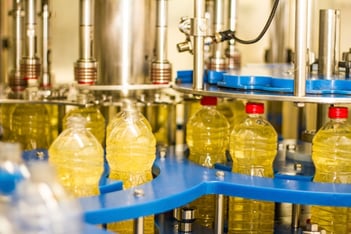 Every year, the average American consumes more than 50 pounds of cooking oil. These oils, which are derived from a variety of plants and plants seeds, are used in everything from salad dressings, margarine, shortenings, snack food and frying. Given the fact that these oils are a significant component of American’s diets, it’s important to make sure they are safe for human consumption. In addition to consumer safety, manufacturers need a quality, shelf-stable product that is free from high concentrations of trace elements such as copper, iron, nickel and magnesium. Trace levels of the metals can impact the hydrogenation of the oils and are often a reflection the oils quality.
Every year, the average American consumes more than 50 pounds of cooking oil. These oils, which are derived from a variety of plants and plants seeds, are used in everything from salad dressings, margarine, shortenings, snack food and frying. Given the fact that these oils are a significant component of American’s diets, it’s important to make sure they are safe for human consumption. In addition to consumer safety, manufacturers need a quality, shelf-stable product that is free from high concentrations of trace elements such as copper, iron, nickel and magnesium. Trace levels of the metals can impact the hydrogenation of the oils and are often a reflection the oils quality.
Oils contain unsaturated fatty acids and relatively high levels of phospholipids, which can react with oxygen to produce unpleasant flavors and odors in the oil. The presence of trace concentrations of metals promotes oxidation and can significantly reduce the shelf life of edible oil. To increase their chemical stability and resistance to oxidation, oils are often partially or fully hydrogenated. Oils are also hydrogenated to increase their melting point, making them suitable for use with fried foods or baked goods and pastries.
Hydrogenation is a chemical process that requires a metal catalyst. Platinum group metals are sometimes used because they are highly active and react at low temperatures and hydrogen gas pressures. Economic alternatives include nickel, but it requires higher temperatures and pressures to initiate the chemical reaction. While metals are introduced during the hydrogenation process, other metals may be present from the soil, environment, fertilizers and pesticides where the plant was cultivated. The metals may also contaminate the oil during the production process and from processing equipment.
The hydrogenation process alters the physical and chemical properties of the oil, including the texture and melting point. As the oil becomes more saturated, it becomes more solid and stable for storage. It is critical that all traces of the metal are removed from the final product to avoid reversing the hydrogenation process and reducing the oil’s shelf life. The metals can also adversely impact the flavor, color and odor of the oil.
Quantifying the trace elements can be difficult given the low concentration of some of the metals. Detecting the levels of trace elements in oil can be completed using a Teledyne Leeman Labs Prodigy7 ICP-OES Spectrometer, a bench-top simultaneous optical emission instrument that provides large format, advanced CMOS Array Detection for true simultaneous measurement. The instrument’s advanced technology provides accurate and reliable results for a large suite of elements in edible oils.
To download our latest application note click this link "The Determination of Trace Elements in Edible Oils using Inductively Coupled Plasma Optical Emission Spectrometry (ICP-OES)"
For more information on the Prodigy7 click the button below

